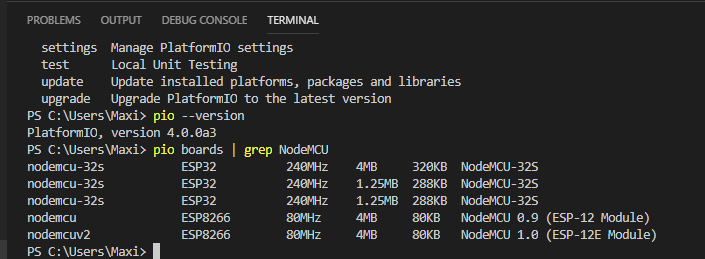Hello Everyone,
I’m not sure if I got to the right place where I can find answers on many of the questions I have since I started with ESP8266 development few weeks ago. I did really spent a tremendous time in researching and reading materials from Espressif, but the more I read, the more I get confused on what to do or where to go next.
In a nutshell, I’m merely an embedded developer and things like MQTT, REST, JSON, and web programming in general are totally new to me. I have finished the development of a product I designed around STM32F407 uC and I thought the ESP8266 is the best way to add IOT/connectivity to my project since it is the most popular IOT SOC out there. However, most of the implementations I have found are intended for Arduino platform. I even couldn’t find a single example project that is not targeted to the Arduino community.
As far as the development of a custom firmware is concerned, the materials published by Espressif are really confusing and I couldn’t get my head around it yet. What they call an “SDK” is no more than a package of source code. No idea what to modify, or where and how to edit or write programs for ESP8266. From what I can understand, PlatformIO is the IDE that I can use to write, debug, and test programs for the ESP8266, and probably the whole project including the code for the STM32? The answer to this question is probably the most important for me, as I really don’t have much time to waste searching for more examples and resources to get started with the the ESP8266 ecosystem.
I’m aware of many initiatives that look great and maybe much more from what I want to do, ESP-Link and ESPurna are examples to mention some. But what I want to do is just simply be able to update the firmware for a deployed STM32F4 product over the internet. A simple web interface to configure the AP credentials initially by customer, and when connected, getting a firmware image off a remote server over internet.
Things I need to know for now are:
1- Do you suggest PlatformIO as the IDE to start with to write/modify custom firmware for the ESP8266?
2- Do I need any other tools, libraries, SDKs, in order to write a custom firmware for ESP8266 with the STM32F4 as the main processor? Again, no Arduino or NudeMCU is involved here!
3- For custom web interface used to manage the AP credentials initially by end-customers, what I need to develop it and do you suggest any templates/projects as a start point to get my product up and running quickly without much involvement in web programming, HTML, REST, etc…
Any feedback is highly appreciated. Thank you very much!
 ) as the platform/board of choice to start the development.
) as the platform/board of choice to start the development.